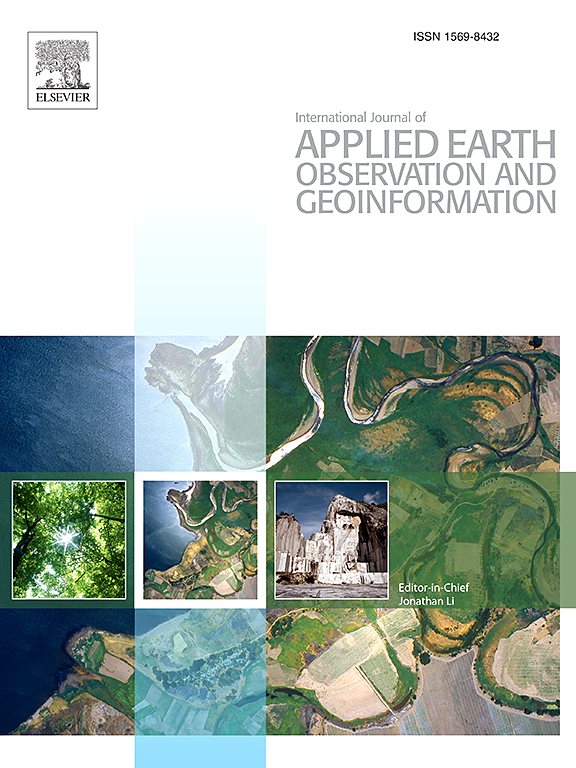Synergistic mapping of urban tree canopy height using ICESat-2 data and GF-2 imagery
IF 7.5
1区 地球科学
Q1 Earth and Planetary Sciences
International Journal of Applied Earth Observation and Geoinformation
Pub Date : 2025-01-31
DOI:10.1016/j.jag.2024.104348
引用次数: 0
Abstract
Mapping urban top of canopy height (UTCH) is essential for quantifying urban vegetation carbon storage and developing effective vegetation management strategies. However, the scarcity and uneven distribution of urban measurement samples pose significant challenges to accurately estimating UTCH on a large scale in complex urban environments. To address this issue, this study utilized ICESat-2 photon spot height data as reference samples, in conjunction with high-resolution GF-2 remote sensing data, to estimate UTCH. To achieve UTCH mapping at a resolution of 4 m, a synergistic model integrating data from the GF-2 and ICESat-2 grid-based canopy height was constructed using the Random Forest technique. The model’s performance was evaluated using 111 urban tree canopy height samples collected across different urban areas. The experimental results demonstrated a moderate correlation between estimated and actual canopy heights, with a coefficient of determination (求助全文
约1分钟内获得全文
求助全文
来源期刊
CiteScore
10.20
自引率
8.00%
发文量
49
审稿时长
7.2 months
期刊介绍:
The International Journal of Applied Earth Observation and Geoinformation publishes original papers that utilize earth observation data for natural resource and environmental inventory and management. These data primarily originate from remote sensing platforms, including satellites and aircraft, supplemented by surface and subsurface measurements. Addressing natural resources such as forests, agricultural land, soils, and water, as well as environmental concerns like biodiversity, land degradation, and hazards, the journal explores conceptual and data-driven approaches. It covers geoinformation themes like capturing, databasing, visualization, interpretation, data quality, and spatial uncertainty.

 求助内容:
求助内容: 应助结果提醒方式:
应助结果提醒方式:


